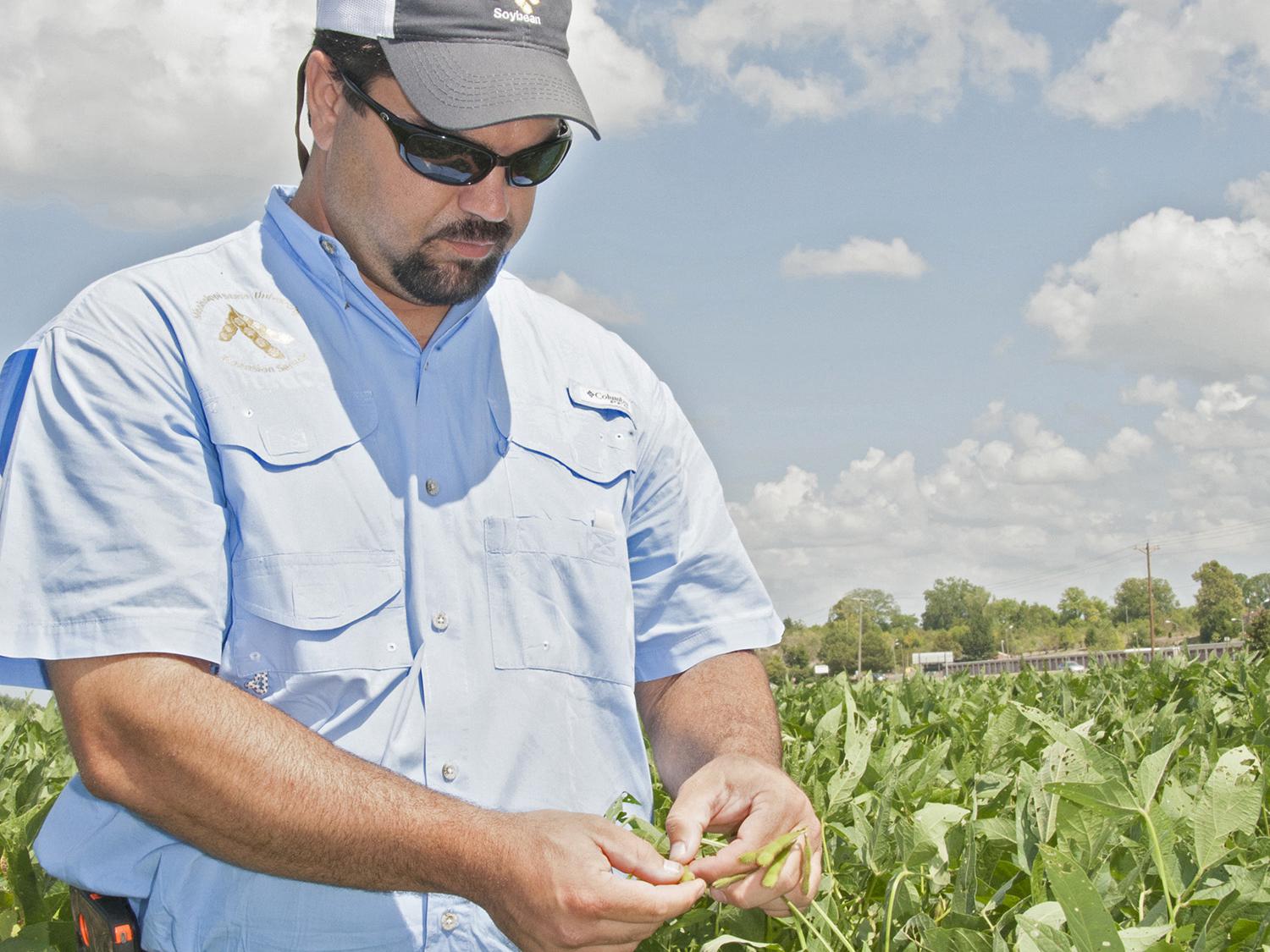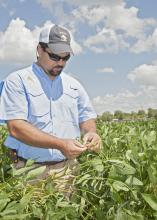Information Possibly Outdated
The information presented on this page was originally released on August 22, 2014. It may not be outdated, but please search our site for more current information. If you plan to quote or reference this information in a publication, please check with the Extension specialist or author before proceeding.
Soybean growers hope to harvest a record yield
JACKSON -- Mississippi soybean growers are on track to harvest a record yield this year despite the cool, wet weather that kept most producers behind schedule by two to three weeks.
Trent Irby, Mississippi State University Extension Service soybean specialist, said growers are optimistic about potential yield this season. The state’s average yield is currently projected to be 48 bushels per acre. The U.S. Department of Agriculture’s Aug. 12 Crop Production Report estimates Mississippi will harvest 2.2 million acres of soybeans.
“We have a varying range of crop maturity because of the differences in planting dates this year,” Irby said. “But the acres that are approaching maturity look really good.”
Some growers in the Delta are harvesting now, but it will still be the end of August or the beginning of September before harvest is in full swing, Irby said.
The USDA’s June 30 acreage report estimated soybean farmers would harvest about 84 million acres nationwide. This forecast is pushing prices down, said Brian Williams, Extension agricultural economist.
“Prices hit a high of $13.27 per bushel on May 22 and were comparable to last year’s prices through mid-summer,” Williams said. “We had an extremely low amount of last year’s soybean crop in storage. But now, as we are nearing harvest, we have record acreage and very good crop conditions driving prices back down.”
September soybean futures are trading for $11.24 per bushel. Cash soybeans are trading for about $11.88 per bushel in Greenville, Mississippi, Williams said.
Yields are expected to be high despite the wet weather, which increased fungal disease pressure and made it difficult for some farmers to maintain a timely spray schedule.
MSU specialists keep growers abreast of current crop issues on the Mississippi Crop Situation Blog. On Aug. 16, Tom Allen reported that frogeye leaf spot is the most widely observed disease in fields. Allen is an Extension plant pathologist and a Mississippi Agricultural and Forestry Experiment Station associate research professor.
He has observed frogeye leaf spot as far south as Lamar County and as far north as Tunica and Prentiss counties. Susceptible varieties are heavily infected, and one Lamar County field had a small area of severe blight.
Severely blighted foliage can result in decreased yields, and growers have had a hard time managing the disease in highly susceptible varieties.
“If a fungicide is applied when a tremendous amount of disease is present or when environmental conditions are extremely conducive for disease development, the fungus will overwhelm the ability of the fungicide,” Allen said. “Fungicides have slowed down the disease on sensitive varieties, but that is about all we can hope for in these varieties.”
Allen identified Sudden Death Syndrome in eastern Bolivar County on Aug. 14. He also found a soybean variety infected with stem canker in a strip trial in the Delta on the same day.
As of Aug. 16, soybean rust has not been detected in Mississippi. However, it has been observed as far north as Prattville, Alabama, and in several Louisiana parishes, Allen said.
Angus Catchot, Extension entomology specialist, said insect pressure has been light for the early-planted crop. Late-planted beans and double-crop acres have required treatment for bollworm. As the crop gets closer to harvest, farmers will likely see more pests arrive.
“Recently, bean leaf beetles have really picked up and are requiring treatment in many areas of the Delta,” Catchot said. “In coming weeks, we anticipate soybean loopers will show up on the later-planted beans and require treatment.”





